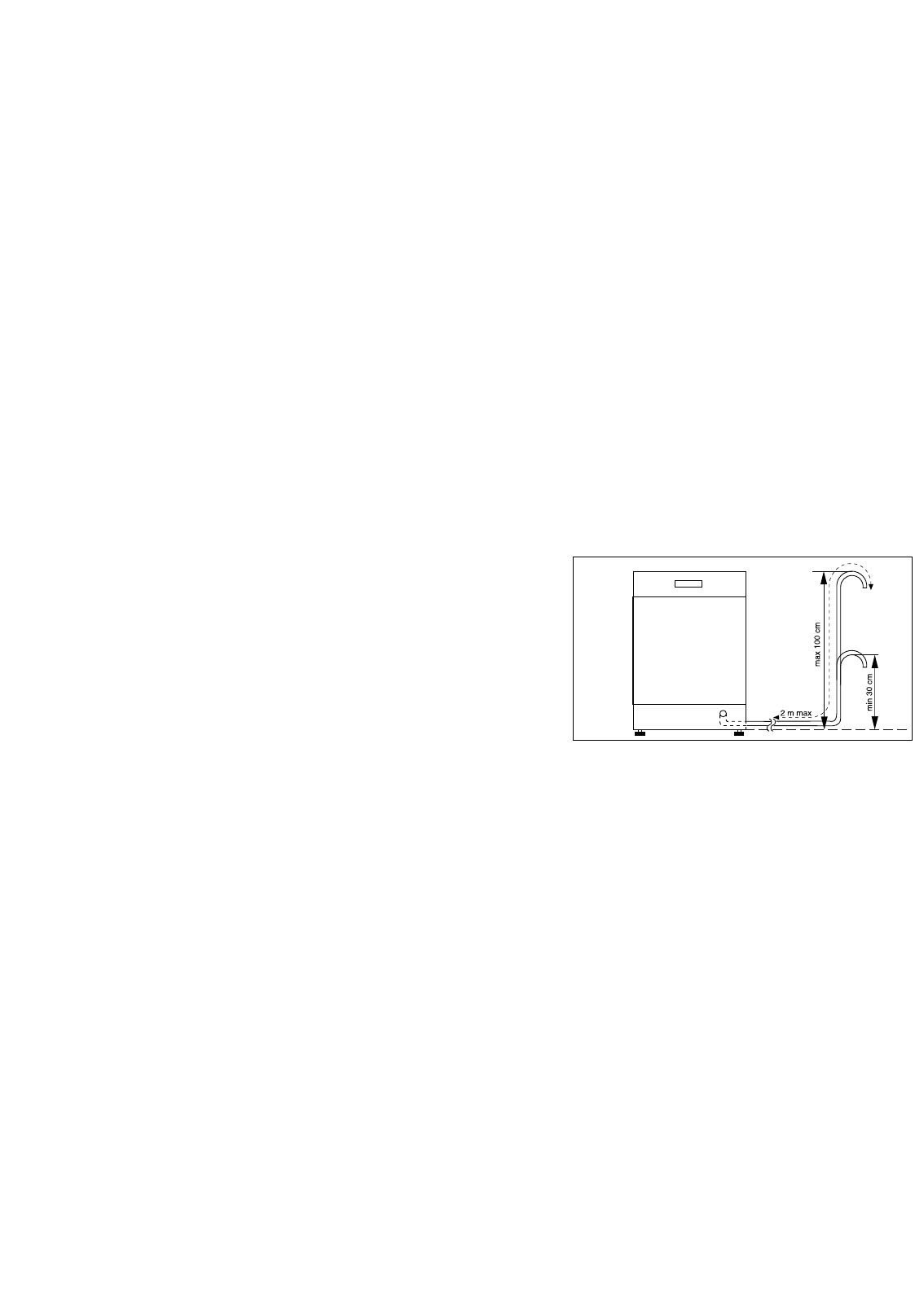
10
Installation instructions
Any electrical and/or plumbing work required to install
this appliance should be carried out by a qualified
electrician and/or plumber or competent person.
Remove all packaging before positioning the machine.
If possible, position the machine next to a water tap and a
drain.
Water supply connections
This dishwasher may be fed with either hot (max. 50°) or cold
water (See "Technical specifications" - Instruction book part 2).
Nevertheless we advise you a cold water supply.
A hot water supply is not always efficient with very soiled
crockery as it shortens the washing programmes a lot.
For making the connection itself, the coupling nut fitted to the
machine’s supply hose is designed to screw onto either a 3/4"
inch gas thread spout or to a purpose made quick-coupling tap
such as the Press-block.
The water pressure must be within the limits given in the
"Technical specifications". Your local Water Authority will
advise you on the average mains pressure in your area.
The dishwasher features fill and drain hoses which can be
turned either to the left or the right to suit the installation.
The locknut must be correctly fitted to avoid water leaks.
The water inlet hose must not be kinked, crushed, or entangled
when it is being connected up.
The dishwasher features fill and drain hoses which can be
turned either to the left or the right to suit the installation by
means of the locknut. (Attention! NOT all models of
dishwashers have fill and drain hoses provided with locknut. In
this case, this kind of facility is not possible).
The locknut must be correctly fitted to avoid water leaks.
If the machine is connected to new pipes or pipes which have
not been used for a long time, you should run the water for a
few minutes before connecting the inlet hose.
Do not use, for connection, old hoses which have been
used in another appliance.
The dishwasher is fitted with safety devices that prevent the
wash water returning into the drinking water system and
comply with the applicable plumbing regulations.
Water outlet hose connection
The end of the drain hose can be connected in the following
ways:
1. To the sink outlet spigot, securing it to the underside of the
work surface. This will prevent waste water from the sink
running into the machine.
2. Hooked over the edge of the sink using the special curved
plastic guide provided (if provided with the machine).
3. To a stand pipe provided with vent-hole, minimum internal
diameter 4 cm.
The waste connection must be at a height of between 30 cm
(minimum) and 100 cm (maximum) from the bottom of the
dishwasher.
The drain hose can face either to the right or left of the
dishwasher
Ensure the hose is not bent or squashed as this could prevent
or slow down the discharge of water.
The sink plug must not be in place when the machine is
draining as this could cause the water to siphon back into the
machine.
If you use a drain hose extension it must be no longer than 2
metres and its internal diameter must be no smaller than the
diameter of the hose provided.
Likewise the internal diameter of the couplings used for
connections to the waste outlet must be no smaller than the
diameter of the hose provided.
Attention!
Our appliances are supplied with a security device to protect
against the return of dirty water back into the machine.
If the spigot of your sink has a "no return valve" incorporated
this can prevent the correct draining of your dishwasher.
We advise you therefore to remove it.
CS18


















